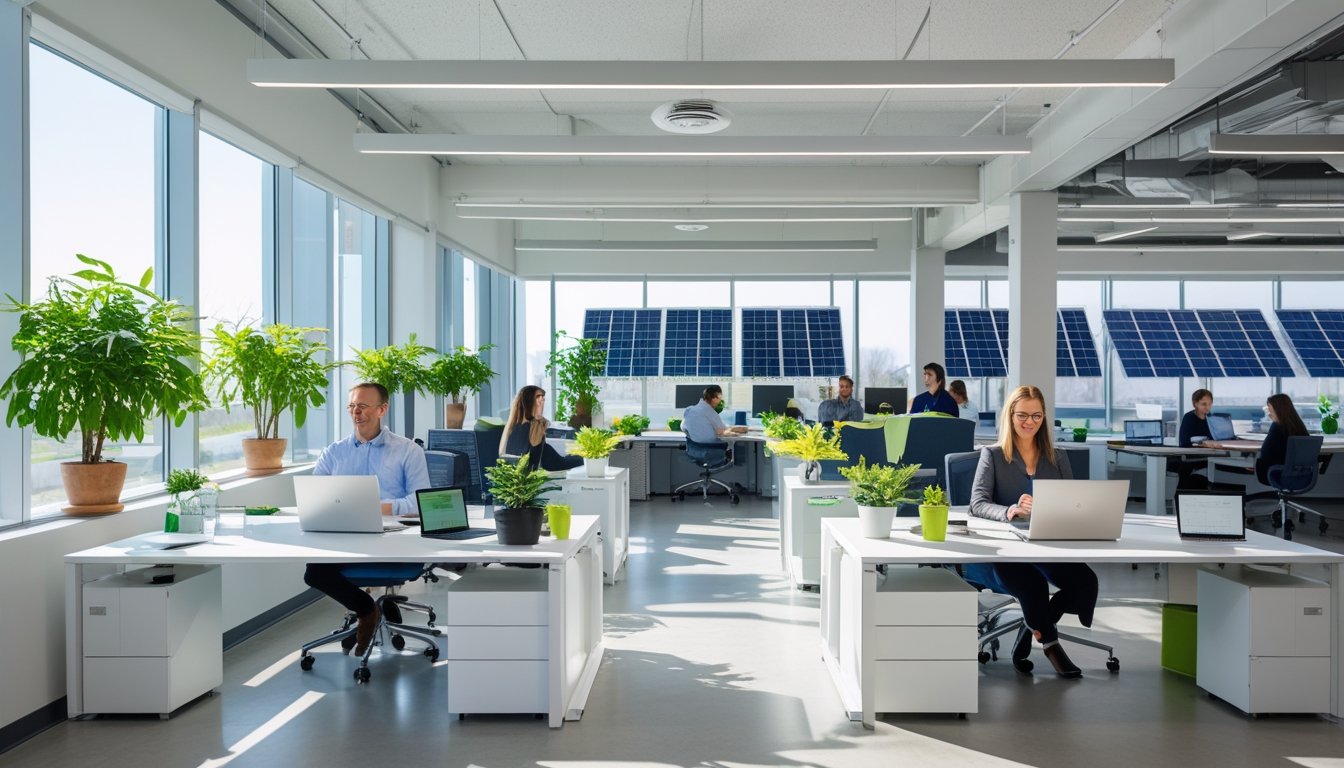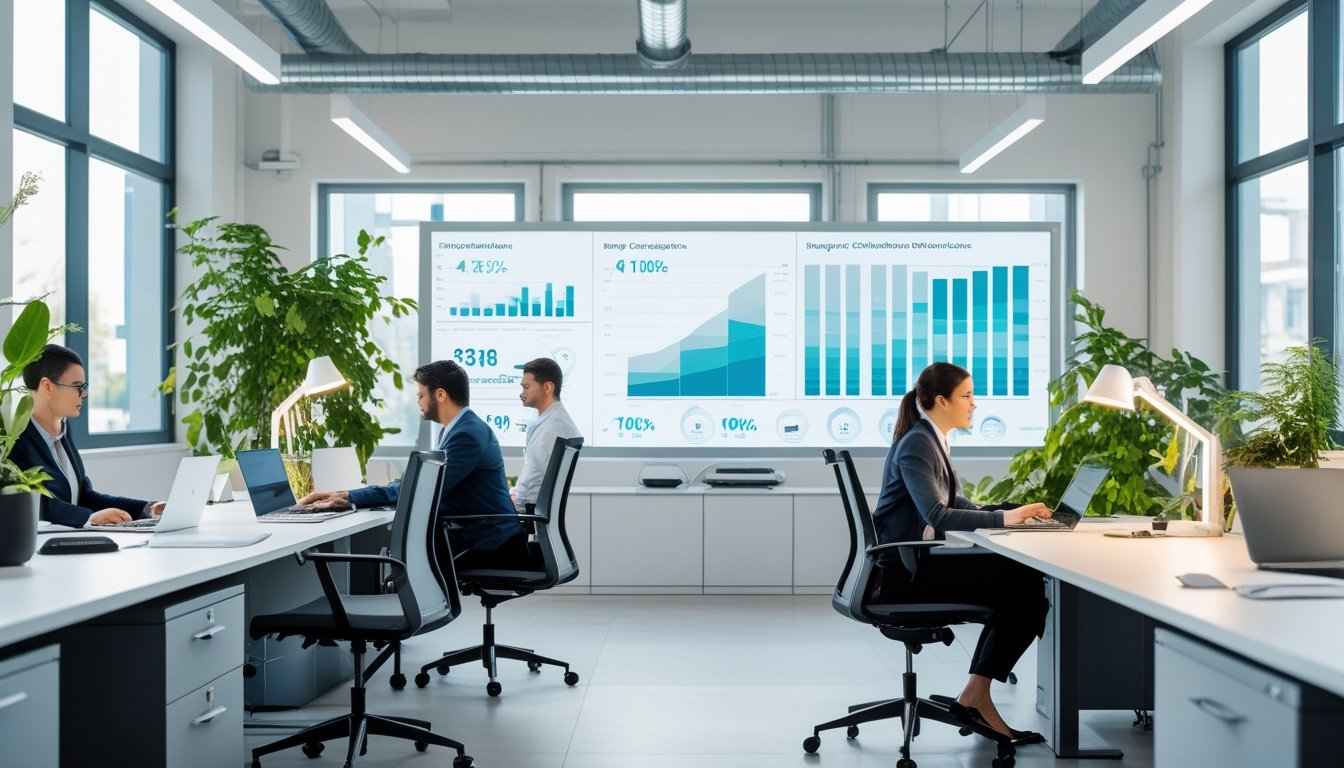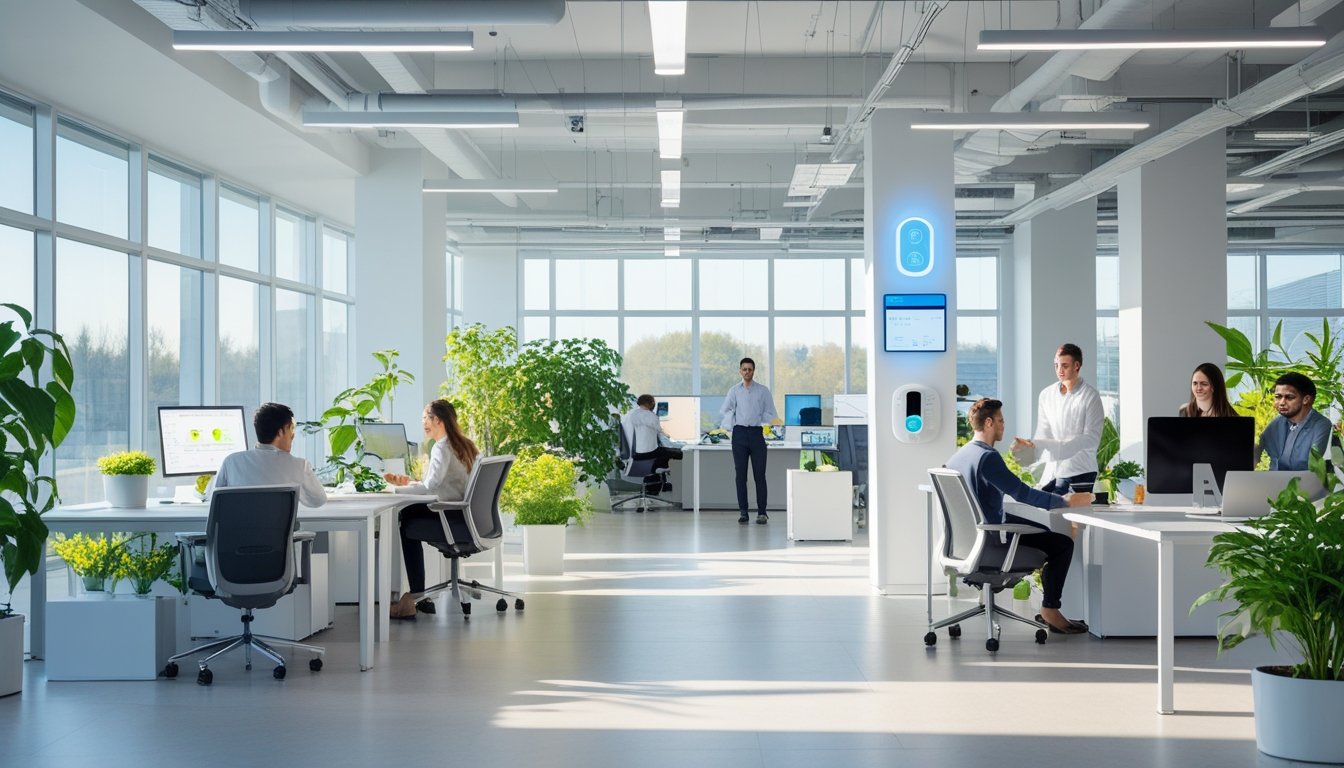Late updated: 29 Jun 2025 15:06
Written by: Amber Collins
Innovative Approaches to Increase Office Energy Efficiency: Maximising Savings and Sustainability
The importance of energy efficiency in office buildings has never been greater. With environmental concerns escalating and operational costs under scrutiny, offices are actively seeking innovative solutions to minimise energy consumption without compromising comfort. Adopting forward-thinking strategies not only reduces power bills but also contributes to a sustainable future by lessening our carbon footprint.

Technological advancements and fresh approaches are at the forefront of this transformation. We explore practical steps, like upgrading HVAC systems, enhancing insulation, and harnessing smart technology to create a more efficient workspace. These methods foster not just cost savings but also improve the overall workplace environment, making energy efficiency a key priority for modern businesses.
It's crucial for businesses to acknowledge the myriad strategies available that support this shift. Simple changes in daily habits, combined with cutting-edge technology, can have a substantial impact on an office's energy usage. As we delve into these approaches, we uncover how businesses can integrate these innovations seamlessly into their operations for a more sustainable tomorrow.
Key Takeaways
- Innovative methods drastically cut office energy use.
- Tech advancements greatly enhance efficiency.
- Simple habit changes can lead to significant savings.
Core Strategies for Enhanced Office Energy Efficiency

To improve energy efficiency in office buildings, it's vital to focus on key strategies such as optimising lighting solutions, advancing HVAC and climate control systems, and integrating building automation technologies. This helps in reducing energy consumption while simultaneously enhancing productivity and lowering operational costs.
Optimising Lighting Solutions
Lighting can account for a significant portion of an office's energy consumption. By implementing energy-efficient lighting, such as LED lights, we can achieve remarkable energy savings. LEDs use less power and have longer lifespans compared to traditional bulbs.
Utilising natural light is another effective strategy. Office layouts that maximise daylight can reduce reliance on artificial lighting. Installing large windows or skylights can be beneficial. Furthermore, deploying occupancy sensors and motion detectors helps ensure that lights are only on when necessary, further minimising wastage.
Choosing ENERGY STAR-rated lighting systems can enhance efficiency. These systems are designed to meet strict energy performance criteria, thus, they can significantly reduce energy costs. By carefully selecting lighting equipment and technologies, we can achieve considerable annual savings.
Advancing HVAC and Climate Control Systems
Efficient heating, ventilation, and air conditioning (HVAC) systems are crucial for maintaining indoor air quality and comfort while reducing energy costs. Upgrading to smart thermostats and programmable systems allows for precise control of heating and cooling, adapting to occupancy patterns and preventing unnecessary energy usage.
Periodic maintenance and regular energy audits are essential to identify inefficiencies in HVAC systems. Ensuring the system's operational efficiency can result in substantial cost savings.
Another approach is to invest in modern climate control technologies, such as variable refrigerant flow systems, which offer flexibility and better energy usage. Implementing these solutions leads to improved air quality and enhanced energy efficiency within the office environment.
Integrating Building Automation and Management Technologies
Incorporating building automation systems (BAS) is a strategic move to optimise energy management in commercial buildings. These systems use IoT devices and smart meters to monitor and control energy usage across different areas.
Building Energy Management Systems (BEMS) can track consumption patterns, allowing for data-driven adjustments to energy usage. By focusing efforts on peak times and high-energy consuming areas, we can reduce energy waste significantly.
Moreover, with the integration of smart building technologies, such as automated lighting and climate control, we gain the ability to optimise energy savings effectively. This integration results in reduced operational costs and enhances the overall efficiency of office spaces.
Innovative and Sustainable Office Solutions
As we aim to enhance office energy efficiency, focusing on innovative and sustainable solutions becomes key. By utilising renewable energy, improving building materials, and promoting eco-friendly practices, we can significantly minimise environmental impact while advancing towards our sustainability goals.
Harnessing Renewable Energy Sources
Our approach centres on integrating renewable energy solutions such as solar panels and wind power. By harnessing these resources, we can greatly lessen our carbon footprint and Co2 emissions. Implementing renewable energy not only contributes to climate change mitigation, but it also reduces long-term operational costs.
Solar panels are cost-effective and increasingly efficient. Meanwhile, wind turbines can be suitable for offices with larger outdoor spaces. When employed, these technologies form the backbone of a sustainable energy strategy, promoting energy independence and resilience.
Improving Insulation and Materials Efficiency
Proper insulation in office buildings dramatically reduces energy consumption by maintaining temperature consistency. By using high-quality insulation materials, we can decrease the demand on HVAC systems, thereby increasing efficiency and reducing energy usage.
Attention to building codes emphasising green construction methods ensures that the offices meet sustainability standards. Utilising energy-efficient appliances complements this, further reducing our environmental impact. Embracing better building materials not only supports energy efficiency, but it also enhances comfort for occupants, improving overall employee well-being.
Promoting Eco-Friendly Practices and Workplace Sustainability
Promoting eco-friendly office supplies and encouraging recycling programmes play vital roles in sustainable office solutions. We can drive change through simple practices like decreasing paper waste and using recycled materials. Installing indoor plants can improve air quality and boost employee morale.
In addition, supporting sustainable commuting options, such as cycling or remote work arrangements, can substantially reduce emissions associated with travel. Rainwater harvesting systems provide innovative ways to manage water resources efficiently. By incorporating these eco-friendly practices, our offices become healthier and more sustainable environments.
Frequently Asked Questions

In our pursuit of energy efficiency, we explore practical strategies for modern offices and ways to conserve energy through design. Emphasis is placed on cultivating a culture of sustainability, reducing industrial energy use, and minimizing office waste.
What are effective energy-saving strategies for the modern office?
Implementing intelligent lighting systems and optimised HVAC systems can make a significant difference. Installing energy-efficient appliances and encouraging responsible energy use amongst staff further bolsters efficiency. Embracing renewable energy sources, such as solar panels, adds a sustainable dimension to our energy strategy.
How can businesses implement successful energy conservation programmes in their operations?
Developing a clear energy policy with set goals and regular audits is key. Offering incentives for employees to reduce their energy consumption encourages participation. Training sessions to educate teams about energy efficiency practices reinforce these initiatives.
In what ways can office buildings reduce their energy consumption through design and practice?
Incorporating natural light via strategic window placement decreases reliance on artificial lighting. Employing thermal insulation and energy-efficient windows lowers heating and cooling needs. Establishing zones for different energy usage patterns optimises energy distribution.
What are innovative methods for promoting a culture of sustainability and efficiency in the workplace?
We can involve employees in energy-saving challenges and celebrate their successes. Creating a sustainability task force helps guide practices and maintains focus. Regular communication of progress and sharing practical tips keeps everyone engaged.
Can you suggest practical measures to lessen energy usage in industrial settings?
Implementing machinery with energy-efficient motors and adopting variable speed drives can enhance efficiency. Conducting regular maintenance ensures optimal performance. Streamlining operations for minimal energy wastage and prioritising renewable energy for production processes are effective choices.
What practices can be adopted to decrease waste production in office environments?
Implement a robust recycling programme with easily accessible bins and clear signage. Encouraging digital solutions over paper reduces waste. Composting organic waste from office kitchens adds an additional layer of waste management efficiency.
